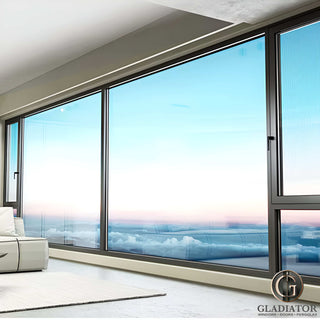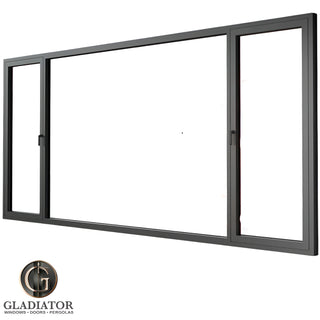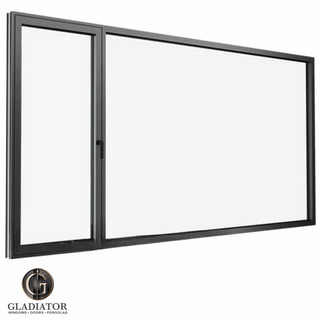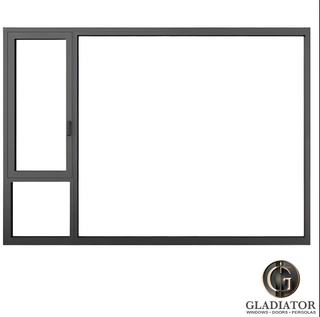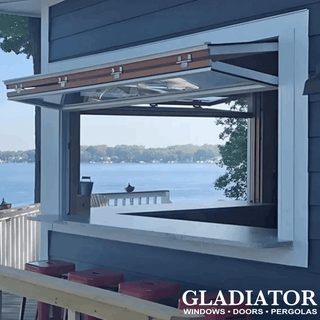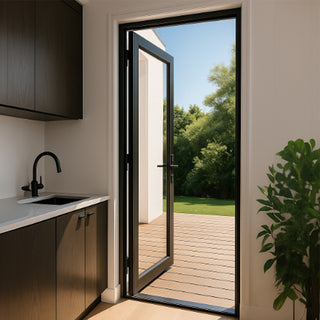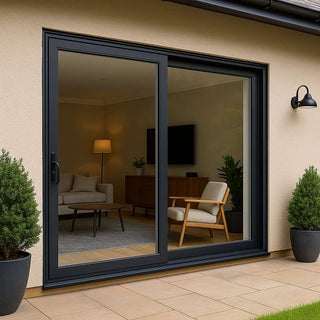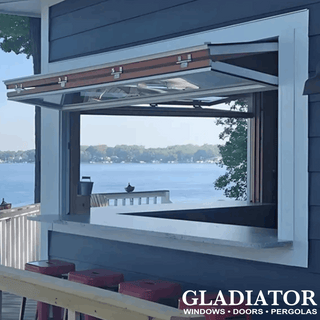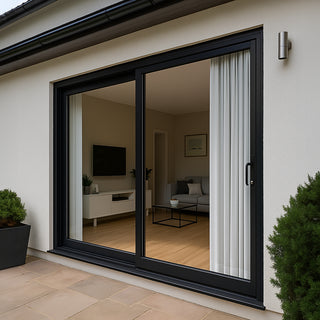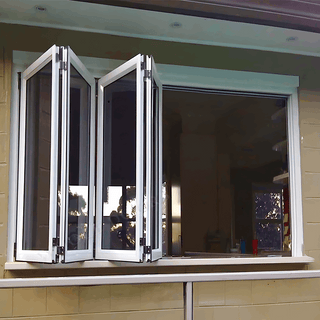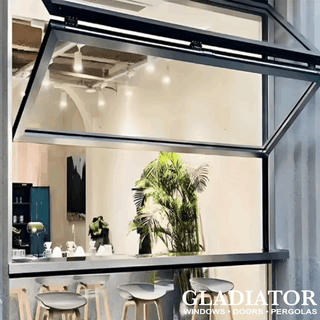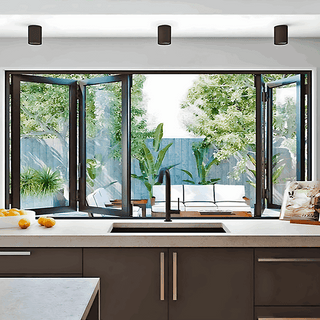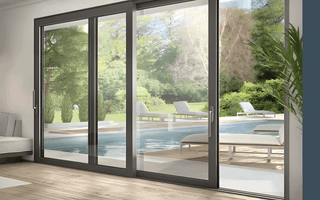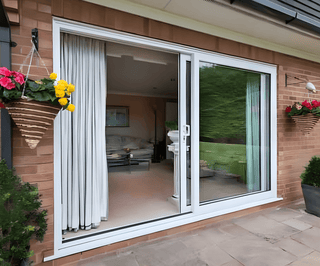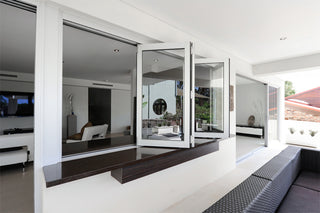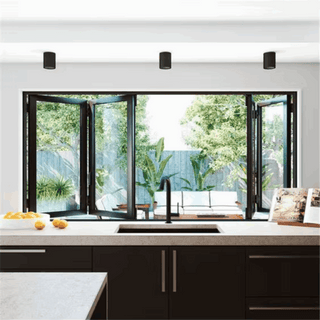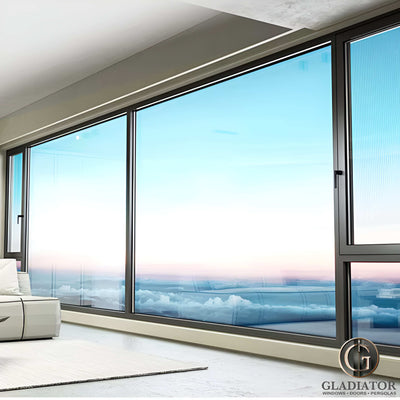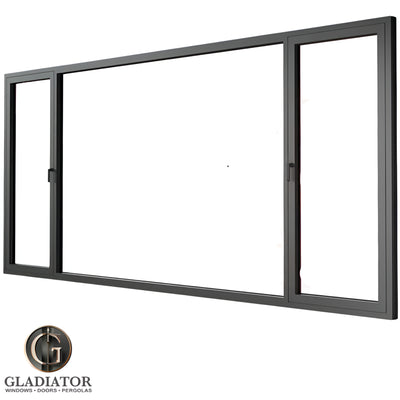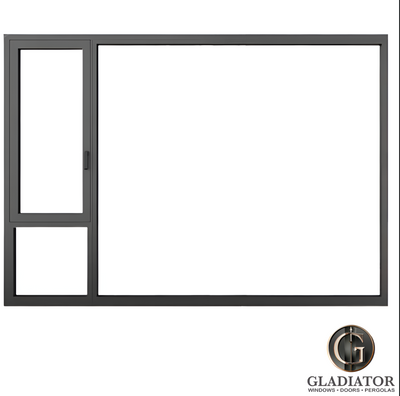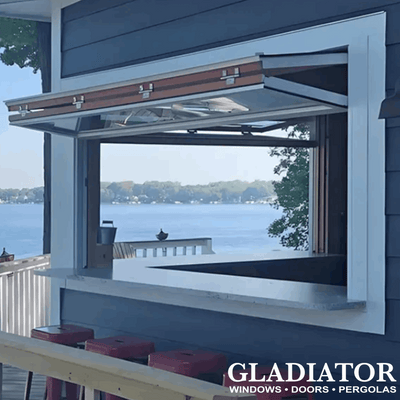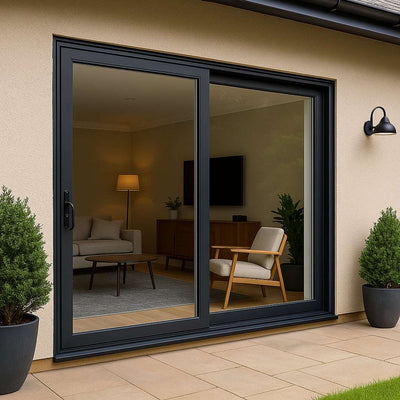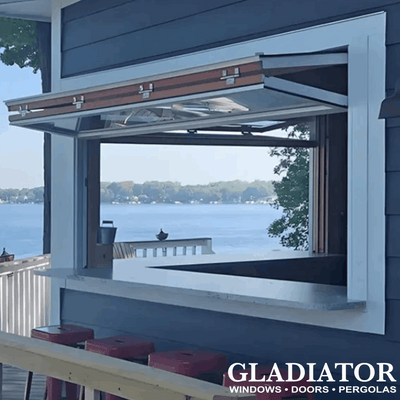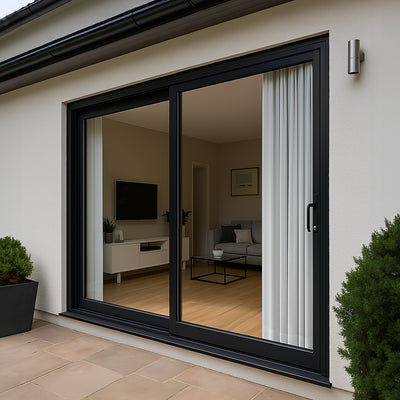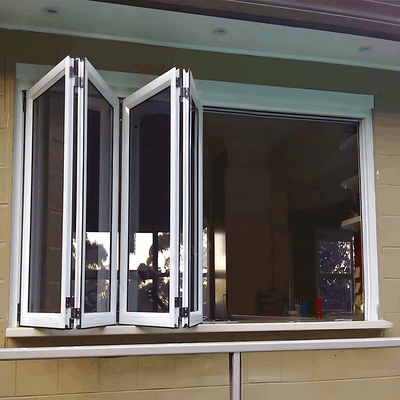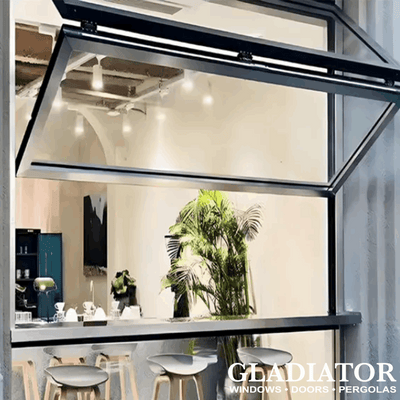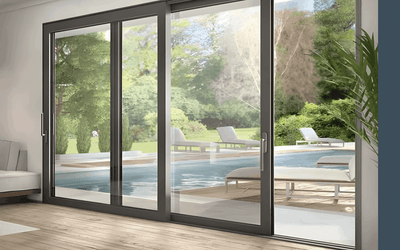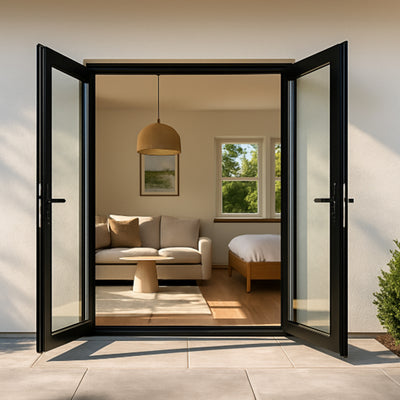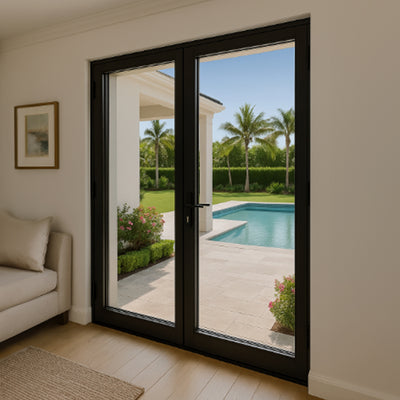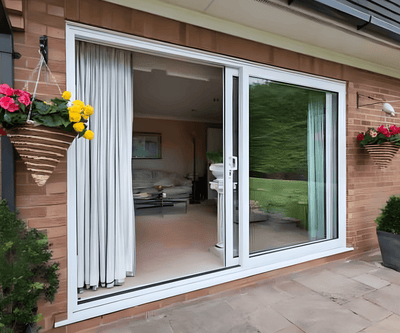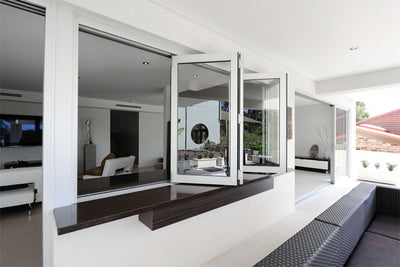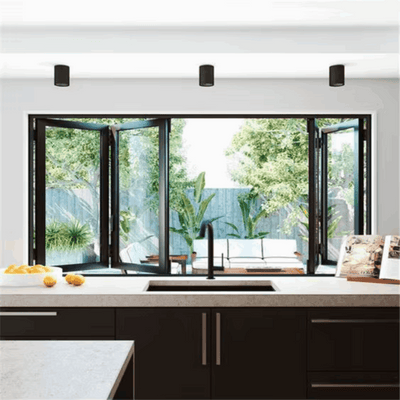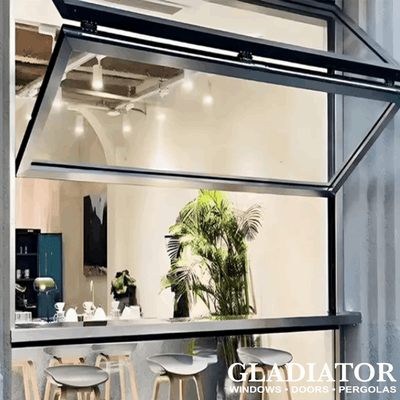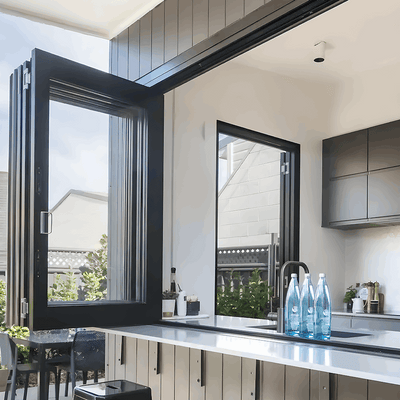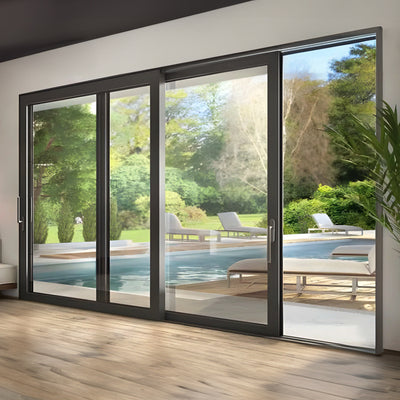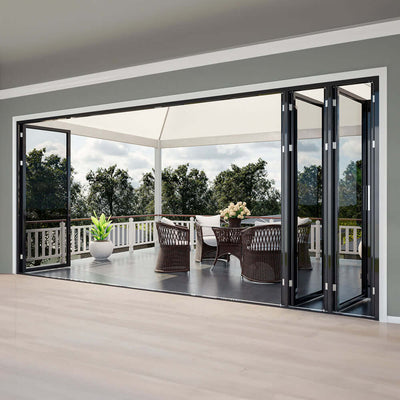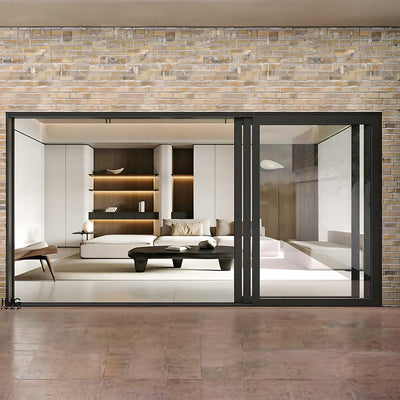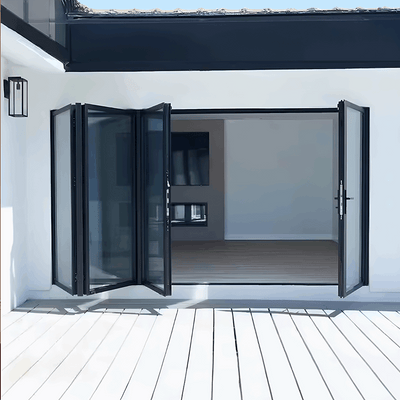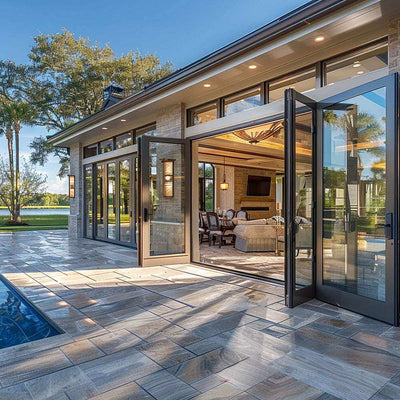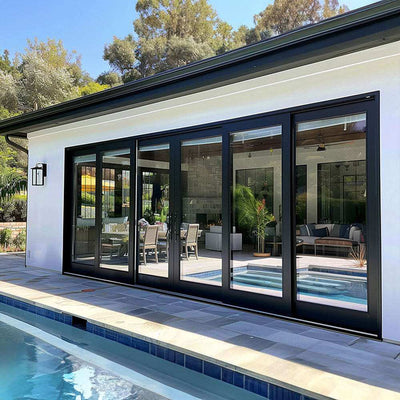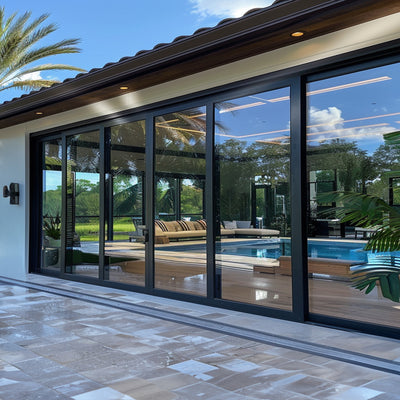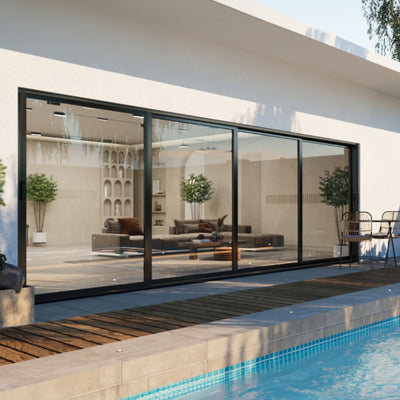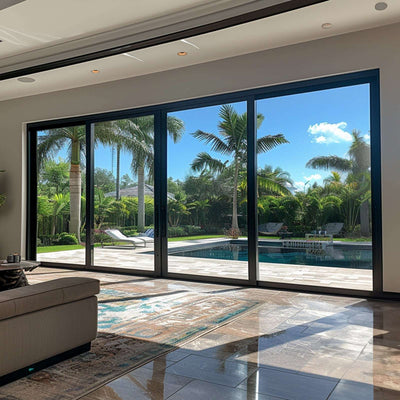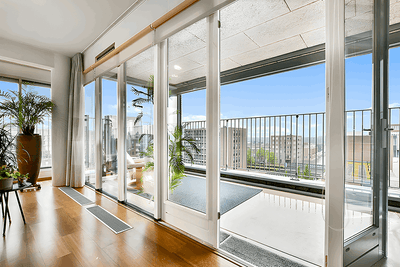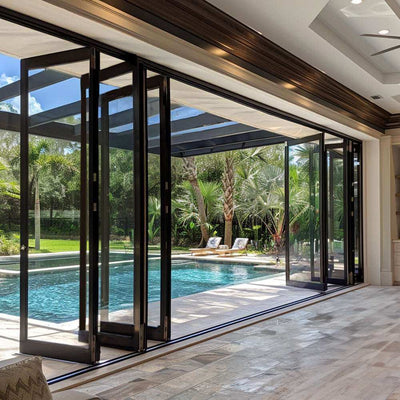Why Your Bifold Doors Are Driving You Crazy
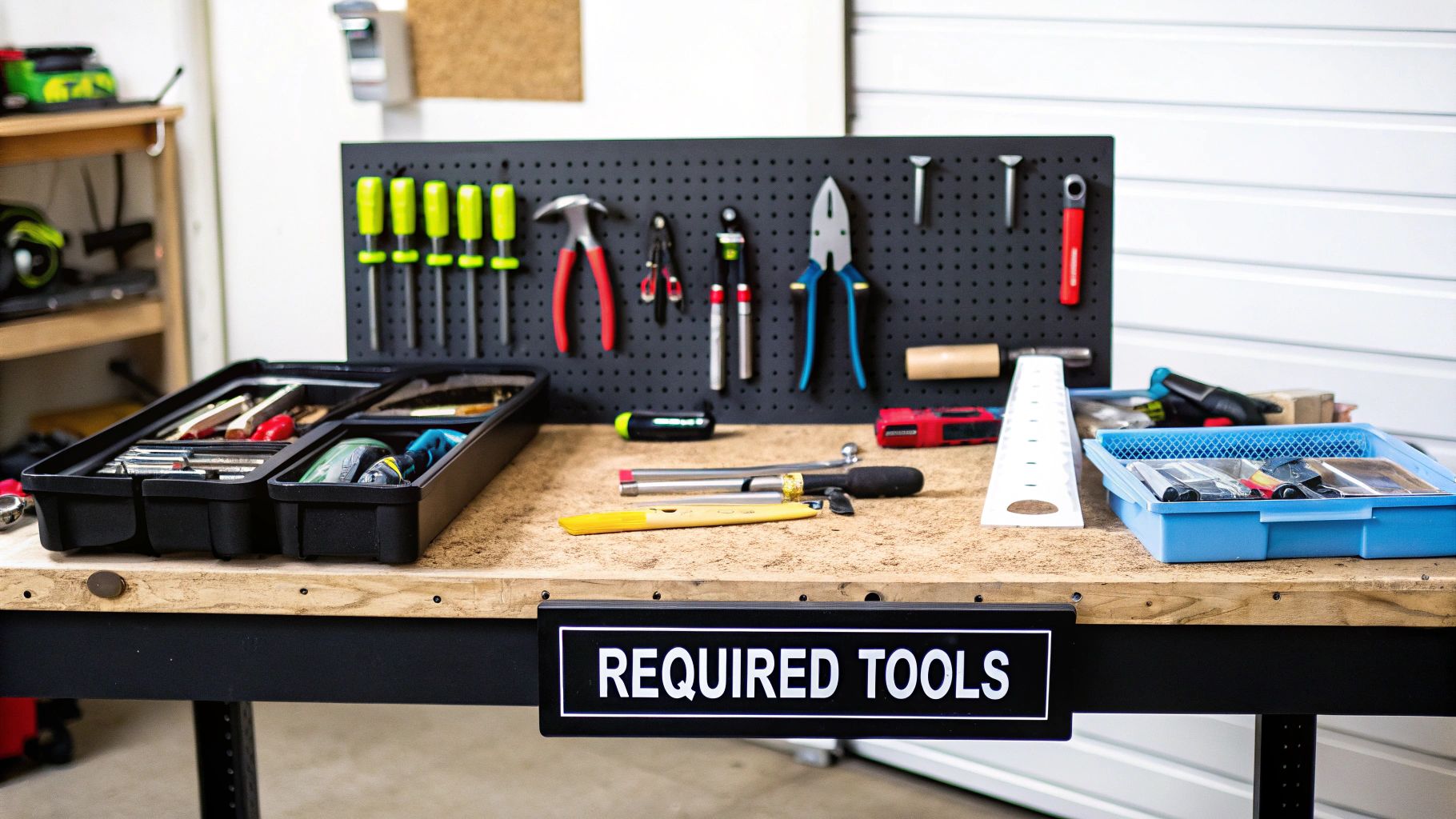
Let's be honest, nothing's worse than starting your day wrestling with stubborn bifold doors. Sticking, scraping, and those unsightly gaps…it's enough to make anyone crazy. But I'm here to tell you a secret: your doors are probably not broken, they're just trying to communicate. After years of working with these finicky things, I've learned to understand their silent language.
One of the most common issues is settling. Houses settle over time, and even the slightest shift can throw your bifold doors off. It's like a crooked picture frame – a small adjustment can make a world of difference.
Another usual suspect? Worn hardware. Think about the hinges on a frequently used door. Eventually, they start to squeak. Similarly, the hardware on your bifold doors can wear down, causing sticking and dragging.
The material of your bifold doors also matters. Wood doors, for instance, can swell and shrink with humidity changes. This can lead to a tight squeeze in the summer and a loose, rattling fit in the winter. Understanding these little quirks is the key to figuring out what's going on.
Speaking of these increasingly popular doors, the global bifold doors market is expected to hit a whopping USD 15.6 Billion by 2033. Driven by modern design trends and a booming construction industry, this growth underscores the importance of proper maintenance. Want to learn more about this expanding market? Check out this insightful report: Bifold Doors Market Report.
Finally, let's talk about knowing when to DIY and when to call in the pros. A simple adjustment is often all you need. However, significant warping or track damage might require professional help. You might even consider exploring other door styles: Comparing Bifold and Sliding Doors. By understanding these common problems, you'll be well on your way to a smoother, more peaceful coexistence with your bifold doors.
Building Your Bifold Door Repair Toolkit
Forget those ridiculously long tool lists you see online! Having wrestled with my fair share of bifold doors, I can tell you that you likely already have what you need tucked away in your toolbox. It's less about owning every gadget under the sun, and more about understanding which tools truly make a difference.
Let's talk about putting together a practical toolkit. You might be surprised to learn that a screwdriver is your most valuable player. Seriously. Making sure you have the right size and type (Phillips or flathead) for your door's hardware is way more critical than any fancy alignment tool. Believe me, I've learned this the hard way!
A level is also essential for getting that perfect vertical alignment. I've even resorted to using a level app on my phone in a pinch – it works! And for those lateral adjustments, a trusty tape measure ensures your doors meet flawlessly in the middle. If the whole process feels a bit overwhelming, finding a reliable handyman is always an option. Check out some resources for Handyman Services.
Beyond the Basics: Smart Additions and Workarounds
While the basic toolkit I mentioned above covers most situations, a few extra items can be real game-changers. A rubber mallet is fantastic for gentle nudges and adjustments without marring your door. If you're dealing with stubborn pins, needle-nose pliers are your best friend.
What if you don't have specialized tools? Get creative! I've used a block of wood and a hammer as a makeshift clamp before – it's all about problem-solving. For a deeper dive into bifold door installation, take a look at these Folding Door Installation Instructions.
Before we go any further, let's talk about some essential tools. The table below breaks down the must-haves versus the nice-to-haves for different types of bifold door adjustments. It's a quick reference guide to help you prioritize your toolkit.
| Tool | Essential Level | Primary Use | Alternative Option |
|---|---|---|---|
| Screwdriver | Essential | Tightening/loosening screws | N/A |
| Level | Essential | Vertical Alignment | Smartphone Level App |
| Tape Measure | Essential | Lateral Alignment | N/A |
| Rubber Mallet | Helpful | Gentle Adjustments | Block of Wood & Hammer |
| Needle-Nose Pliers | Helpful | Removing Pins | N/A |
As you can see, a few key tools are truly essential, while others are helpful but can be substituted with a bit of ingenuity.
Remember, adjusting bifold doors isn't about amassing a mountain of tools. It's about understanding the mechanics and applying a little ingenuity. With the right approach and a few essential tools, you can tackle most bifold door issues efficiently and effectively.
Reading Your Door's Symptoms Like a Detective
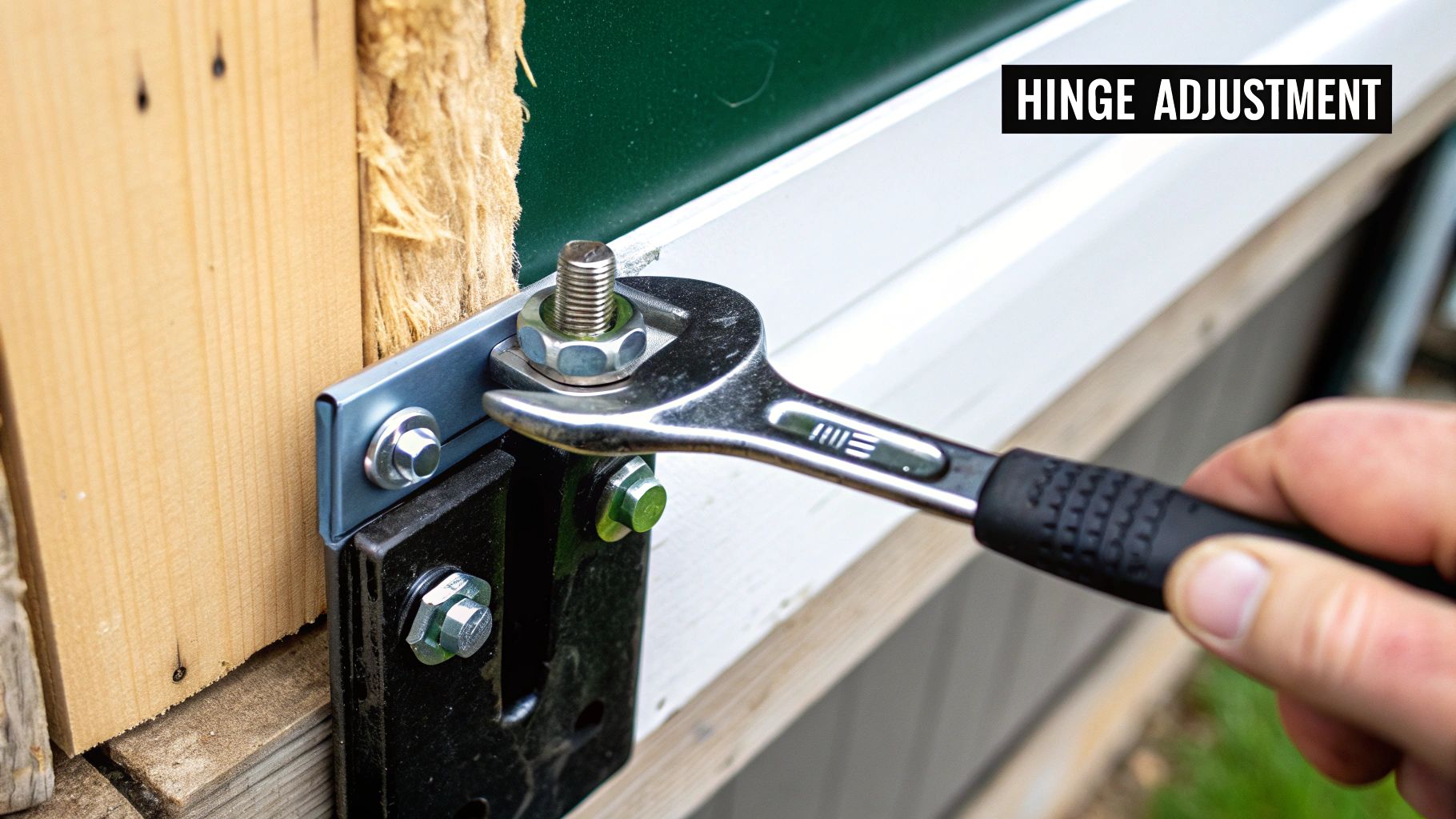
Your bifold doors are always talking to you, just not with words. They communicate through little hints: a slight drag here, a tiny gap there, maybe an annoying scrape as they open. The secret to getting them working smoothly is learning how to interpret these signs. It's a bit like detective work, piecing together clues to solve a mystery.
For instance, if a door is dragging on the carpet, it might mean you have a vertical alignment problem. A small gap at the top could be pointing to the same thing. By picking up on these subtle cues, you can often identify the root cause before it turns into a real problem. Good resources, like this guide on IKEA furniture assembly, can also offer insights into simplifying assembly and troubleshooting processes, even for doors.
Identifying the Culprit: Alignment, Hardware, or Track
Experienced folks tackling bifold door issues usually have a systematic approach. They begin by figuring out whether the problem lies with the alignment, the hardware, or the track. Each of these requires a different fix.
Something else to keep in mind is that seemingly unrelated problems can actually be connected. A misaligned door can stress the hardware, leading to it wearing out faster than it should. This underlines the importance of fixing the underlying issue, not just the obvious symptom. Ignoring a small alignment problem today could mean a much bigger headache tomorrow.
From Random Adjustments to Methodical Solutions
Many people fall into the trap of just tweaking things randomly until something seems to work. This is a bit like trying to treat an illness without a proper diagnosis! A more methodical approach, based on observation and understanding, delivers much better, longer-lasting results. This means carefully watching how the door moves, listening for any odd sounds, and feeling for resistance.
Once you learn how to “read” your doors, you'll sidestep the frustration of endless trial-and-error. You'll gain the confidence to tackle problems systematically and get the job done efficiently. Think of it as detective work – it's the foundation of successful bifold door maintenance and repair.
The Three Adjustments That Solve Almost Everything
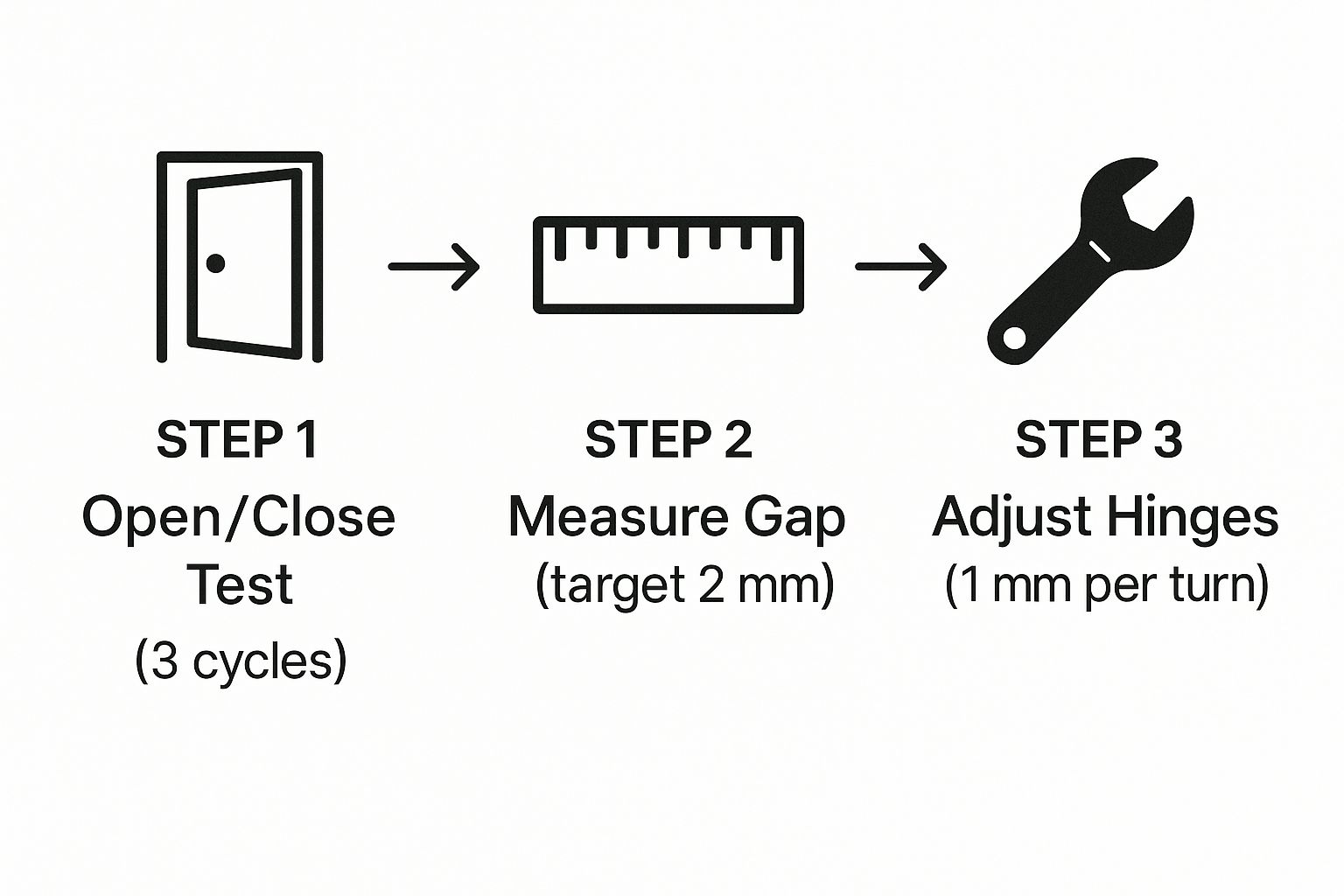
This infographic shows you the process: open/close test, measure the gap, adjust the hinges. It’s all about those small, precise tweaks, and repeating the process until it's just right. Don't expect perfection on the first go, but trust me, with a little patience, you'll have those doors gliding smoothly again.
Let me share the three main adjustments I use all the time to fix most bifold door issues. They're surprisingly effective.
First up: vertical alignment. If your door is dragging on the carpet or has a gap at the top, this is your fix. Usually, it's as simple as adjusting the screws on the bottom bracket.
Lateral Alignment: Getting Those Doors to Meet in the Middle
Next, we tackle lateral alignment. This one's for doors that don't meet properly in the middle, rub against the frame, or just look off. The top pivot bracket screws are your friends here. My pro tip: tiny adjustments are key. Test the door after each tweak. You can also find more helpful advice in our guide on expert bifold door adjustments.
Pivot Adjustments: The Secret to Smooth Operation
Finally, there are the pivot adjustments. These often-overlooked adjustments control how smoothly the doors swing and fold. The pivot bracket usually has screws to fine-tune the tension. This makes a huge difference. After you’ve adjusted everything, sometimes the hardware itself needs a little attention. Proper cabinet hardware placement is crucial for smooth operation. It's amazing how much these small tweaks affect how well your doors work and how long they last.
As a side note, the bifold door industry is booming! It's projected to hit $16 billion by the end of the forecast period. Shows you how popular these versatile doors are becoming in homes and businesses. You can learn more about the growing bifold doors market.
Master these three adjustments, and you'll be able to fix almost any bifold door problem. It's like unlocking a secret code to smooth-operating doors.
Handling the Stubborn Cases That Fight Back
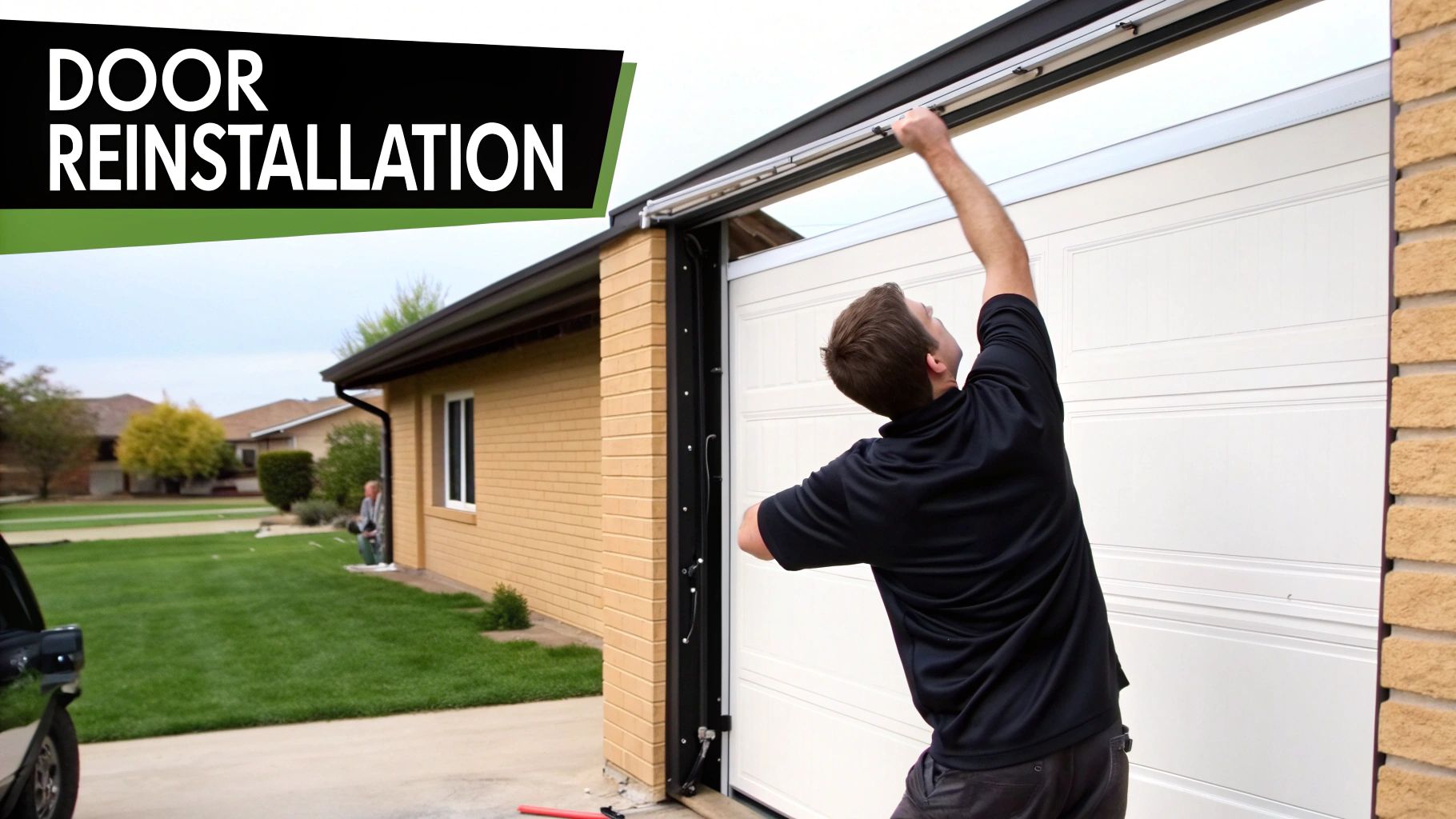
Sometimes, the usual tweaks just won't do the trick with bifold doors. That's when things get interesting…and maybe a bit hair-pulling. We're talking warped doors, worn-out pins, and track troubles that require a little more finesse. Trust me, I've been there, staring down a door that seems determined to defy gravity and common sense. But there are ways to wrestle these stubborn things into submission.
Tackling a door with multiple issues is like untangling a really nasty knot. It's easy to make things worse without a clear plan. Prioritize! Figure out the biggest problem. If the door is warped, for instance, adjusting the alignment is just wasted effort. Deal with the warping first. Speaking of which, you might find this helpful: Door Sagging Repair: Professional Fixes You Can Master Today.
Working With Older Doors and Creative Solutions
Older doors often lack the easy adjustment features of newer models. This adds a layer of complexity, but it's not a deal-breaker. I've had good luck using shims to create custom adjustments on older doors—like tailoring a suit to fit perfectly. Thick carpets or uneven floors can also throw a wrench in the works. Adjusting the bottom bracket might not be enough; you might need to trim the door or add a threshold.
It's interesting to note that the bifold door market has a pretty fascinating history, impacted by things like the rise of green building and even the growth of the restaurant industry! Between 2017 and 2022, the market saw a CAGR of 3.18%, hitting nearly $10,078.70 million in 2022. You can dig into more of those details here: bifold doors market. This growth shows just how popular and important these doors are. And sometimes, while waiting for replacement parts, a temporary fix is all you need. Duct tape might not be pretty, but it can keep a door working in a pinch!
Knowing When to Call in the Pros
Finally, know your limits. Major structural damage or complicated track issues are best left to the pros. There’s no shame in calling for reinforcements—it can actually save you time, money, and a lot of frustration. Knowing your limits is key to any successful home project. By prioritizing repairs, thinking creatively, and recognizing when to call in an expert, you can conquer even the most stubborn bifold door.
Here's a handy table I put together to help you troubleshoot common issues:
Common Bifold Door Problems and Solutions A troubleshooting guide matching specific door issues with their most effective adjustment techniques
| Problem | Likely Cause | Adjustment Method | Difficulty Level |
|---|---|---|---|
| Door rubbing against frame | Misaligned door or track | Adjust top or bottom pivot brackets | Easy |
| Door sticking or binding | Loose or worn pivot pins | Tighten or replace pivot pins | Easy to Medium |
| Door dragging on floor | Uneven floor or settled house | Adjust bottom bracket or trim door | Medium |
| Door not latching properly | Misaligned latch or strike plate | Adjust strike plate or latch | Easy |
| Warped door | Moisture damage or poor construction | Replace door or shim | Hard |
This table summarizes the most frequent problems and their solutions, giving you a starting point for diagnosing your specific door issue. Remember, while many fixes are DIY-friendly, complex problems might require a professional.
Maintenance That Actually Prevents Future Problems
The best way to fix a bifold door? Don't let it break in the first place! Seriously, a little smart maintenance goes a long way. Forget those complicated schedules and expensive products – I'm talking quick, easy routines that will keep your bifold doors happy for years.
You don't need to obsess over every single part. Some maintenance advice is just marketing hype. Focus on the important stuff: tracks and hinges. A simple quarterly check – just opening and closing the doors a few times – can catch little problems early. Hear a new squeak? Feel a slight drag? That’s your cue to investigate before things get worse. Trust me, this proactive approach saves so much hassle later.
Also, think about your local climate. Humidity makes wood swell, and temperature swings can affect the hardware. If you live in a humid area, good ventilation is key. In colder climates, lubricate your hinges more often so they don't seize up. Got wooden bifold doors? This might be helpful: Enhance Your Home With Bifold Doors - Wood.
Effective Lubrication and Track Cleaning
Not all lubricants are created equal. Some actually attract dirt and make things worse. Dry silicone spray is the way to go. It keeps everything running smoothly without becoming a magnet for grime.
For track cleaning, a vacuum with a brush attachment is your best friend. Suck up all that dust, hair, and debris that can jam things up. For really stubborn gunk, soapy water and a toothbrush work wonders.
Finally, don't forget the finish! Wood needs occasional polishing or waxing, while metal might need a protective coating. This keeps the doors looking good and protects them from the elements. These simple maintenance habits are a small investment for the long-term health of your bifold doors.
Your Action Plan for Bifold Door Success
So, we've talked about everything from figuring out what's wrong with your bifold doors to actually tweaking them. Now, let's create a plan you can use. Think of this as your guide to becoming a bifold door expert.
Remember how we talked about playing detective? Before you even pick up a screwdriver, look closely at the door. Is it sticking somewhere? Are there gaps between the panels? Where does it seem to resist opening or closing? This helps you zero in on the actual issue.
Then, think about tackling things in the right order. If you've got a few problems, start with the biggest one. A slightly misaligned door is no match for a warped panel. Fix the major issue first, or you'll just end up having to redo your work later. Don’t just start twisting screws—that’s a recipe for disaster!
Building Your Bifold Door Confidence
Working with bifold doors isn't about becoming a master overnight. It's about improving your skills over time. Begin with the simple adjustments, like making sure the door hangs straight. Once you’re comfortable with that, move on to the more complicated stuff. Think of it like learning to ride a bike: training wheels first, then you’re off and running.
Here’s a quick guide for different situations:
- Door dragging on the floor? Check if it’s hanging straight. Then, look at the pivot points.
- Gaps at the top? The door is probably not hanging level.
- Doors not meeting in the middle? You’ll need to adjust the horizontal alignment.
- Really tough problems? Look back at the troubleshooting table we discussed earlier.
This isn’t a complete list, but it’s a good place to start. Speaking of starting points, are you ready to say goodbye to bifold door hassles and hello to smooth, quiet operation? Gladiator Window and Doors offers a wide selection of custom-made bifold doors at great prices. From large sliding doors to panoramic folding windows, they might have just what you need. Upgrade your doors today!

















